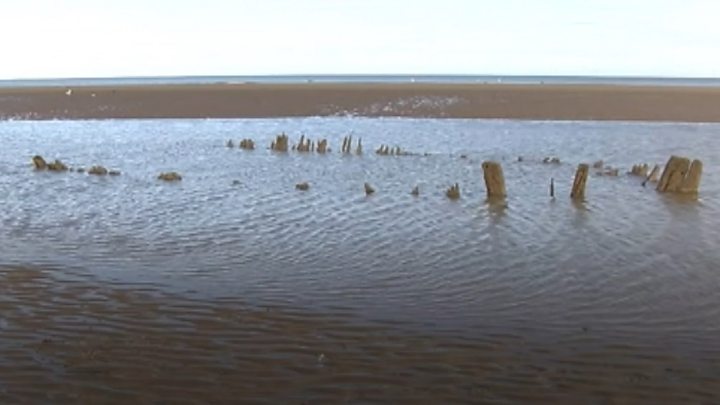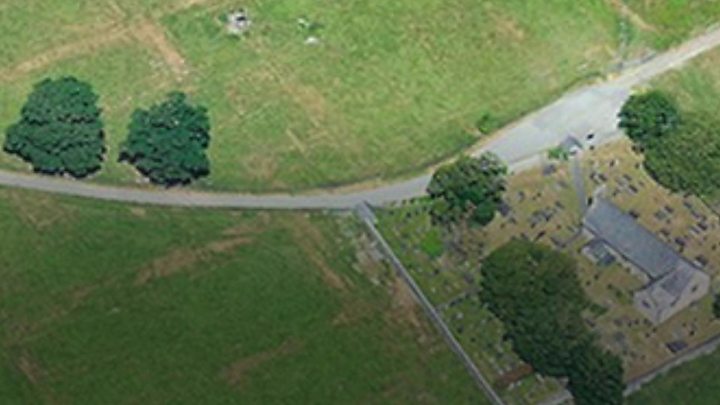
Media playback is unsupported on your device
More ancient monuments and historic ruins will be uncovered as extreme weather caused by climate change gets more frequent, an expert has said.
The remains of a shipwreck off the Abergele coast dating back 150 years was revealed by July’s thunderstorms.
A prehistoric forest and 200 archaeological sites were also unearthed following extreme weather.
Archaeologist Dr Paul Belford said “you’ll see more and more of this” as the world warms up.
Experts have “tentatively identified” the recently-uncovered Abergele wreck as the 35-tonne wooden sloop Endeavour that sunk without trace in gales in October 1854.
The remains of the 45ft long vessel was found at Pensarn beach in Conwy county by a member of the public.
“The stormy weather created giant waves which moved the sand banks and exposed the boat,” said Dr Belford, chief executive of the Clwyd-Powys Archaeological Trust.
“You’ll see more and more wrecks and ancient monuments uncovered as extreme weather events become more frequent due to the impact of climate change.
“Like the recent shipwreck find, these discoveries can help us answer the questions of our history.
Image copyright
Getty Images
A prehistoric forest was found between Ynyslas and Borth in Ceredigion
Image copyright
Getty Images
The forest has become associated with a 17th Century myth of a sunken civilisation known as Cantre’r Gwaelod – the Sunken Hundred
“Hopefully research will also help us learn lessons from the past and aid the fight against climate change.”
The north Wales shipwreck lies in the area known as Abergele Roads, a large area of shoals, near a tidal pond, which is only visible after storms and during low tides.
It comes after a forest buried under water and sand for more than 4,500 years was uncovered between Ynyslas and Borth in Ceredigion by Storm Hannah in May.
The remains of the trees, preserved in the local peat, were exposed by low tides and high winds.

Media playback is unsupported on your device
While hundreds of archaeological sites were found in the 2018 heatwave.
The long dry spell last year left parched fields with unmistakable “crop marks” painted into the landscape.
Ancient hillforts and Roman settlements were among sites spotted from the air.
Image copyright
RCAHMW
The buried ramparts of Cross Oak Hillfort, Talybont-on-Usk, showing as crop marks in Powys












